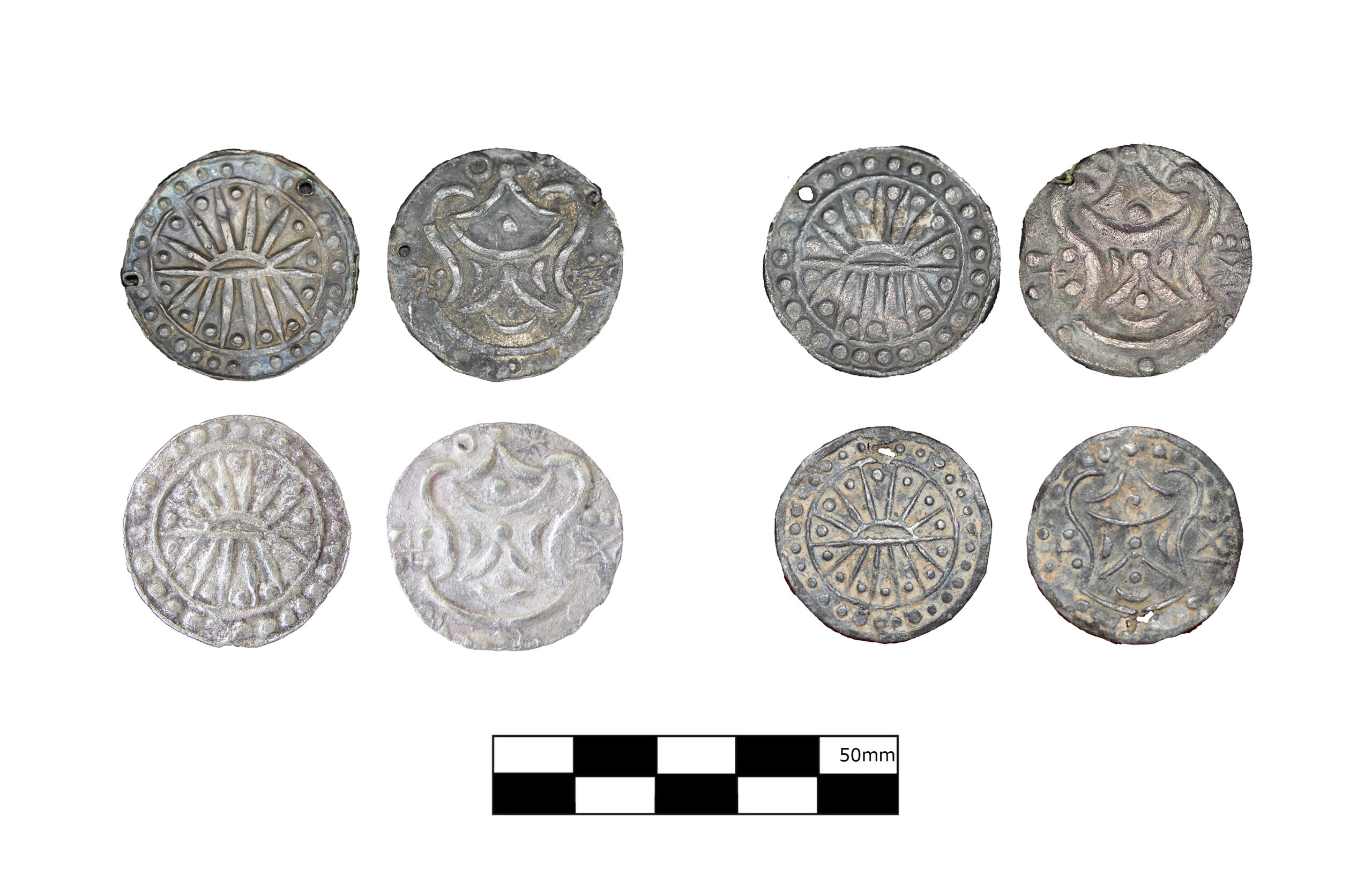
"The study examined more than 200 silver coins, many of which feature a rising sun on one side and the Srivatsa-an early Indian religious symbol-on the other. First minted in Myanmar's Irrawaddy basin as early as the fourth century AD, these coins display striking uniformity. The sun design typically featured 12 rays encircled by 27 beads, a motif inspired by Vedic astrology, while the reverse combined the Srivatsa with auspicious symbols such as the swastika, moon, and sun."
"Instead, Rising Sun/Srivatsa issues circulated widely, from the Gulf of Martaban in Myanmar to Funan in the Mekong Delta and as far as Bengal in eastern India. "No other early Southeast Asian coinage exhibits as widespread a distribution as those bearing Rising Sun/Srivatsa motifs," explained Dr Andrew Harris of the National University of Singapore, lead author of the study. "However, the coins have rarely been analysed as an integrated artefactual dataset, with scholars often associating them with specific cultural-historical groups aligned with modern nation-state boundaries.""
"Analysis reveals that these coins were usually made of high-quality silver, with purity ranging from 80-90 percent, and in some cases reaching almost 100 percent. They typically measured 28-35 mm in diameter and weighed around 9.2-9.4 grams-equivalent to 80 ratti, an ancient Indian weight based on seed measures. Importantly, archaeologists also found evidence of fractional coins-halves, quarters, and smaller cuts-as well-as miniature denominations."
Coin production in first millennium AD Southeast Asia connected economies from Bangladesh to Vietnam and indicates early medieval economic sophistication comparable to contemporary civilisations. More than 200 silver coins were examined; many bear a rising sun on one side and the Srivatsa on the other. Minting began in Myanmar's Irrawaddy basin by the fourth century AD with notable uniformity. The sun motif featured 12 rays encircled by 27 beads, drawing on Vedic astrology; reverses paired the Srivatsa with auspicious emblems such as swastika, moon, and sun. Issues circulated widely across Myanmar, the Mekong Delta, and Bengal. Most coins are high-purity silver (80–90%, sometimes nearly 100%), 28–35 mm across, weighing about 9.2–9.4 g (80 ratti), with evidence of fractional and miniature denominations.
Read at Medievalists.net
Unable to calculate read time
Collection
[
|
...
]